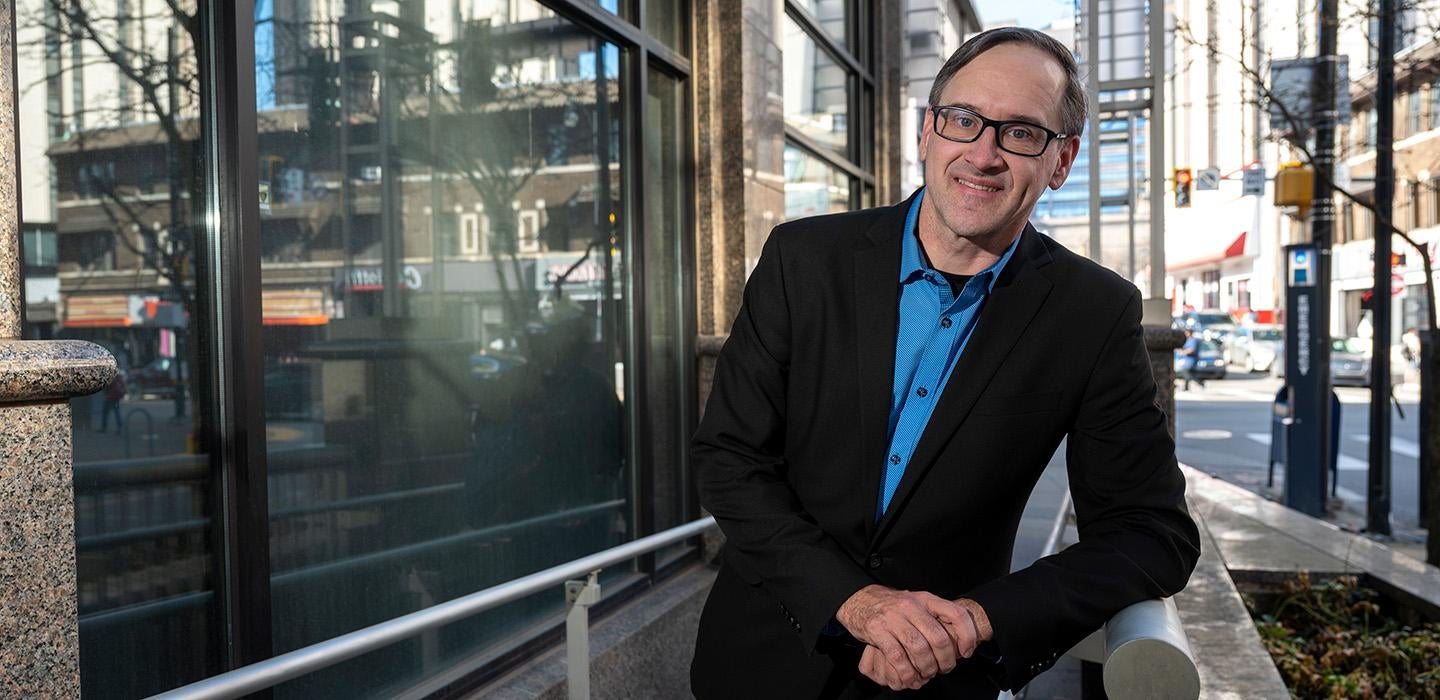
Subscribe to Pittwire Today
Get the most interesting and important stories from the University of Pittsburgh.It’s happened to all of us. You sit down at the computer, ready to start an essay or a blog post or an email. But all that stares back is a blank page and a blinking cursor. How do you break through the writer’s block?
Ray Jones turns to his “smart computer friend” — an artificial intelligence chatbot called ChatGPT.
“It’s just like having a really smart roommate who you can bounce things off of,” said Jones, a clinical professor in Pitt’s College of Business Administration and Joseph M. Katz Graduate School of Business. “I see it as a huge opportunity.”
Jones’ first experience with ChatGPT came over winter break, a month after tech company OpenAI released the technology to the public and earned a tsunami of buzz for the tool’s ability to have convincing, confident conversations with users.
“It became like a video game in some ways,” Jones said. “If I asked it a generic question, it might return something kind of milquetoast and not all interesting. But if I prompted it and asked meaningful follow-up questions, I could actually get it to do something useful.”
Just two months after launch, ChatGPT has more than 100 million monthly users. Among other concerns, some worried commentators have suggested college students could abuse the tool, handing in essays partially or entirely written by AI.
Jones, however, has taken the opposite tack. He’s teaching 180 students across three sections of business ethics courses this semester, and he’s encouraging those students to use AI to explore essay topics. Jones sees these tools as a way to level the playing field, especially for students for whom English isn’t their first language.
[Faculty, find more resources on generative AI from the Center for Teaching and Learning.]
“How in-depth you can go with these essays could be hindered by your prior experience or your comfort level with doing this kind of writing or your technical language skills,” he said. “For the purpose of short essays, this is going to help a lot of people engage with the material.”
Jones gives open-book exams where students read a 15-page case study ahead of time and write a timed essay. He’s encouraging students to explore their thinking using ChatGPT — to ask it questions about the topic and then develop their own thoughts.
That’s not to say ChatGPT is perfect or will complete the students’ essays for them. Its confidently presented answers are often incorrect — and stuck in the past, as it only has access to information up to 2021.
For those reasons, Jones said, using AI tools as writing assistants requires a user to be a persistent interviewer and a diligent editor. While he’s excited to see students using the tool to augment their learning and thinking, he doesn’t want them copy-pasting blocks of AI-generated text into their essays.
“That, to me, is what we want to avoid,” said Jones. “What’s fun about it is that your smart computer friend can push you to think various ways about a topic, which you then pull back into the paper.”
Keep up with Jones’ efforts to use ChatGPT.
— Patrick Monahan, photography by Tom Altany


